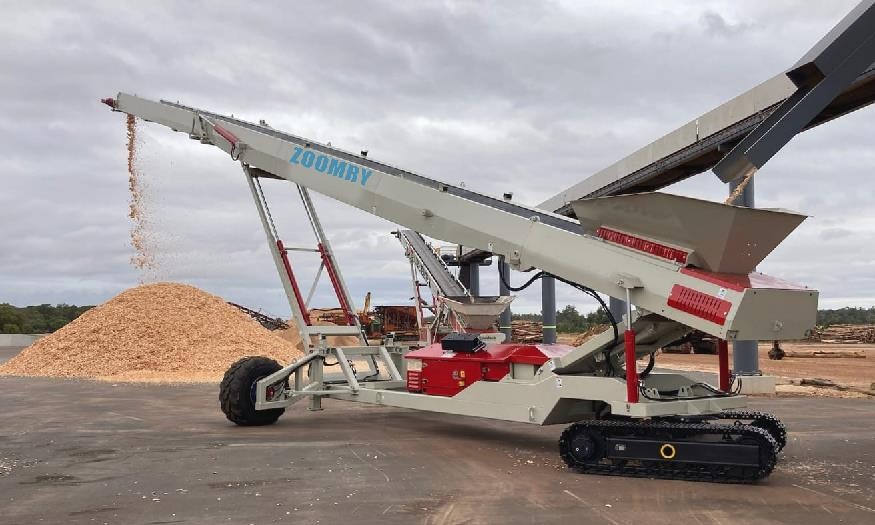A radial tracked stacker is a robust and highly versatile machine used primarily in industries that require efficient material handling and stockpiling solutions. This specialized equipment is designed to transport bulk materials, such as aggregates, ores, and construction materials, while simultaneously creating radial stockpiles. In this article, we'll delve into the essential features, functions, and applications of a radial tracked stacker, shedding light on why it's an invaluable tool in various industrial settings.
Key Features of a Radial Tracked Stacker
Radial tracked stackers are engineered to offer optimal performance and flexibility. They typically incorporate several key features:
- Tracked Mobility: Radial stackers are mounted on tracks, allowing them to navigate diverse terrains, including rough and uneven surfaces. This mobility ensures easy access to material stockpiles and minimizes the need for additional machinery.
- Adjustable Conveyor: The conveyor system on a radial tracked stacker is designed to pivot, allowing it to create radial stockpiles of varying sizes. Operators can adjust the conveyor's angle and height to control the shape and height of the stockpile.
- High Capacity: These machines are capable of handling large volumes of material, making them suitable for applications requiring efficient material transport and stockpiling.
- Remote Control: Many modern radial tracked stackers come equipped with remote control capabilities, enabling operators to manipulate the machine's movements and conveyor adjustments from a safe distance.
- Durability: Radial stackers are built to withstand the harsh conditions of industrial environments, with sturdy construction and materials that resist wear and tear.
How Do Radial Tracked Stackers Work?
The operation of a radial tracked stacker involves several key steps:
- Material Loading: Bulk materials are typically fed onto the conveyor of the stacker through a hopper or loading chute.
- Conveyor Movement: The conveyor transports the material along its length to the desired location for stockpiling.
- Radial Stockpiling: The operator adjusts the conveyor's angle and height to create a radial stockpile. This stockpile can be circular or semi-circular, depending on the requirements of the application.
- Continuous Operation: Radial tracked stackers are capable of continuous operation, allowing for efficient material handling and stockpile creation.
Applications of Radial Tracked Stackers
Radial tracked stackers are indispensable in various industries and applications:
- Aggregate Industry: They are commonly used in quarries and aggregate processing plants to transport and stockpile materials like crushed stone, sand, and gravel.
- Mining: Radial stackers play a crucial role in mining operations by facilitating the transport of ores and minerals from extraction sites to processing facilities.
- Construction: These machines are used on construction sites to handle and stockpile construction materials, including concrete aggregates and fill materials.
- Port and Harbor Facilities: Radial tracked stackers help manage bulk cargo at ports and harbors, efficiently stacking materials like coal, grain, and iron ore.
- Recycling: They are employed in recycling facilities to handle and stockpile recyclable materials, such as scrap metal and paper products.
In conclusion, a radial tracked stacker is a valuable material handling solution that offers efficiency, flexibility, and durability in a wide range of industrial applications. Its ability to create radial stockpiles with ease makes it an essential tool for companies seeking to streamline their material handling and storage processes.
Whether you're in the mining, construction, or aggregate industry, the radial tracked stacker proves to be an invaluable asset for optimizing your material handling operations.

 ZOOMRY
ZOOMRY

